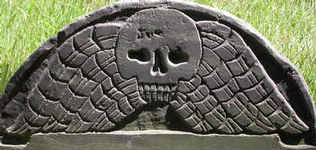
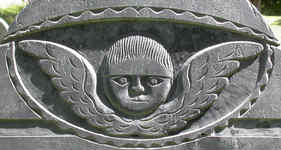
|
|
Symmetrical winged skulls date from 1674 as the earliest detailed stone decoration in New England. The design was widely copied and, within a few years, was joined by a somewhat less macabre symmetrical winged face called a "soul-effigy," the stone cherubs of this website name. These low relief or intaglio designs were immensely popular and constitute the the preponderance of stone designs carved before the tree-urn revolution of 1800.
|
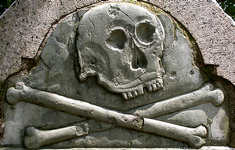 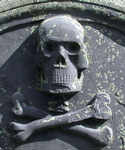
|
|
An asymmetric skull motif with crossed leg bones and no wings soon appeared. These "two-boned" skulls are found one or two per burying ground, far less common than the winged skulls. Many depict damaged skulls with cracks and snaggled-teeth. A face-on two-boned skull is rare.
|
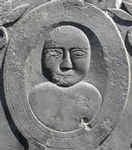 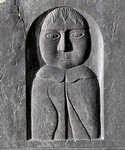 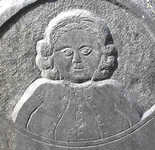 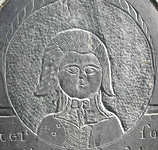
|
|
The two "portraits" on the left are generic faces without wings found on many stones that are collectively too similar to have represented the deceased. The two on the right are life-like and may have been true portraits, actual depictions of the people buried beneath. In small towns, carvers could have known their "clients" or a likeness could have been drawn before death.
|
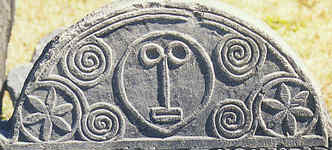 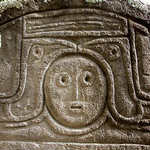
|
|
Another group of carvers reduced faces to outline in a cartoonish "mask" that was usually surrounded by elaborate compass flowers and spirals.
|